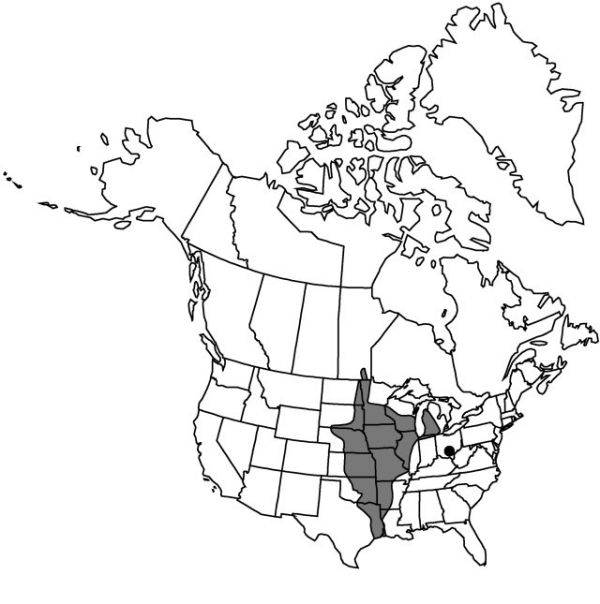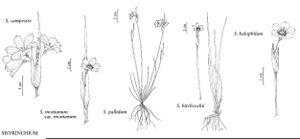Sisyrinchium campestre
Bull. Torrey Bot. Club 26: 341. 1899.
Herbs, perennial, cespitose, light green to olive or ashy olive, sometimes with purplish base when dry, to 4 dm, not glaucous. Stems simple, 1.2–2.5 mm wide, glabrous or scabrous, margins usually entire, similar in color and texture to stem body. Leaf-blades usually glabrous, bases occasionally becoming fibrous but not persistent in tufts. Inflorescences borne singly; spathes green to purplish, glabrous or scabrous, keels usually entire; outer 22–50 mm, 10–32 mm longer than inner, tapering evenly towards apex or occasionally slightly constricted proximal to apex, margins distinct or rarely connate basally to 1 mm; inner with keel usually gibbous, hyaline margins 0.1–0.3 mm wide, apex acuminate to acute, ending 0.4–3.5 mm proximal to green apex. Flowers: tepals white to pale blue, bases yellow; outer tepals 7–12.7 mm, apex rounded to emarginate, aristate; filaments connate ± entirely, stipitate-glandular basally; ovary similar in color to foliage. Capsules light to dark-brown, globose, 3–5 mm; pedicel spreading to ascending. Seeds globose to obconic, lacking obvious depression, 0.5–1 mm, granular to rugulose. 2n = 32.
Phenology: Flowering spring–early summer.
Habitat: Prairies, meadows, roadsides
Elevation: 20–500 m
Distribution

Man., Ark., Ill., Ind., Iowa, Kans., La., Mich., Minn., Mo., Nebr., N.Dak., Ohio, Okla., S.Dak., Tex., Wis.
Discussion
Selected References
None.
Lower Taxa
"dm" is not declared as a valid unit of measurement for this property.
